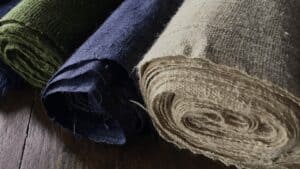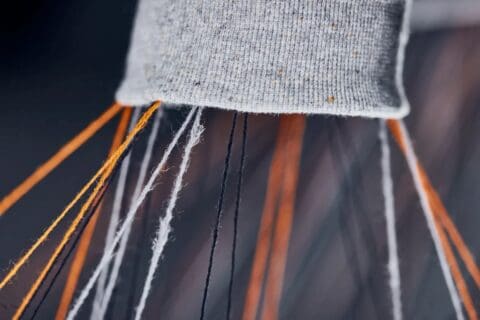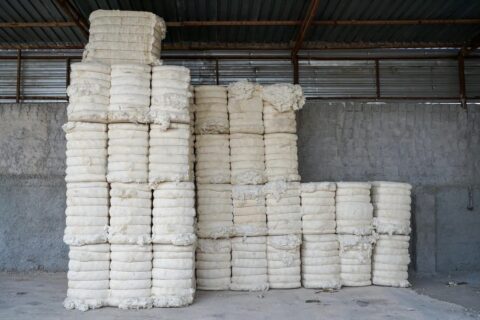The garment sector and fashion industry are coming under intense scrutiny on sustainability grounds at present. Textiles and fabrics are as much in the spotlight for their carbon and water footprints, as they are up on the catwalk. So, in this SustMeme Guest Post, CEO and Co-Founder at Hemp Foundation, Vishal Vivek throws open the wardobe doors and challenges us to rethink what we wear and why. He asks: Will hemp fabric take over the cotton industry within the next 10 years?

VV: When you hear the word hemp your mind probably goes to marijuana and hashish, correct? Well, here, we are talking about its cousin that comes with significantly lower amounts of tetrahydrocannabinol content (THC). We are talking about industrial hemp or the hemp fabric — it doesn’t give you a high, but is set to be the gamechanger in the fashion and textile world.
While all this might sound absurd at first, the qualities of hemp, as a fabric, will leave you spellbound. It conducts heat, resists mildew, and dyes very well. Hemp has antibacterial properties and even blocks UV rays! If all that wasn’t enough, its tensile strength is almost three times that of cotton; plus, it can also blend easily with other fabrics.
It sounds too good to be true — so, what’s the catch?
Hemp is coarse. Imagine wearing a burlap sack, that’s how it would feel! So, how can it hope to overtake cotton, the smooth king of fabrics?
The coarseness of hemp is a thing of the past. Back in the 1980s, Chinese scientists made a breakthrough: They managed to get rid of lignin, the reason behind the coarse nature of the fabric. Moreover, they did so without compromising on strength. This resulted in hemp becoming a linen-like fabric to touch; and cotton-like for all practical purposes.
So, now that the fabric has been corrected to perfection, what should we expect from it?
At the very least, hemp will take over the cotton industry completely, in as little as 10 years.
This is not guesswork; we can back up that statement.
Carbon-negative wonder weed
Hemp is basically a weed. It is a rotational crop, needs no pesticides, and is carbon negative. Also, it has a smaller ecological footprint than its mainstream counterpart.
All in all, hemp requires far less financial input, less geographical area and significantly fewer resources than cotton.
So, what really is the problem with cotton anyway?
Cotton is no goody two shoes
Picture this: Your favorite cotton t-shirt, with the cool caption on it, is made of many resources. Those resources include 0.1 pounds of pesticides, 0.22 pounds of fertilisers, 1.2 pounds of fossil fuels, and 2,700 litres of water. Yup, all that for a single cotton t-shirt — now, we’ll leave you to do the maths for global production…
I ask you: While the world is facing an acute water shortage, is it justified to use so much water on cotton clothes?
The solution? Hemp! As more and more people start realising that hemp requires a mere 33% of the water used for cotton production, but yields 220% more fabric, the shift will be substantial.
Return of the reigning king of yesteryears
Hemp itself, however, is anything but new. In the neolithic age, in China, hemp was amongst the earliest domesticated plants. From food and fibre, to medicine, it was used for almost everything: Ropes, sails, canvases, and even the paper on which was written the American Declaration of Independence — all were made of hemp.
Now, the time has come for us to shift to more environmentally conscious ways; and hemp offers the best means of replacing the monopoly of cotton, especially in the fashion world.
But what brought about the downturn in hemp’s fortunes in the first place?
The industrial revolution and cotton gin made it easier to mass-produce cotton, so the charms of hemp began to fade. Also, when marijuana consumption invaded the United States, hemp became associated with drugs and crime.
Capitalists looking for ways to make cotton king, lobbied for taxes on farming hemp and eventually got its production banned.
So, how has the situation improved since?
In the USA, the Controlled Substances Act of 1970, has been reversed with the 2018 Farm Bill. The bill legalises the production of industrial hemp, albeit with strict restrictions. Hemp production is therefore bound to increase.
The days of a cotton monopoly in the fashion world are numbered. If the growth trajectory of hemp awareness continues to be sustained, it will become an industry leader; almost wiping out cotton from the marketplace in the coming decade, with the rise in popularity of hemp-fabric based products like clothes and even masks.
Hemp fashion has overcome the hippie phase
Long gone are the days when hemp clothing had a hippie vibe to it. The fashion has evolved and from intimates to accessories, hemp is beginning to capture mainstream markets.
Here is a selection of the labels and brands forging ahead in hemp fashion:
- WAMA is an intimate wear brand and a pioneer in hemp fashion. Banking on hemp’s breathability, plus antibacterial, antimicrobial and soothing properties, WAMA underwear represents a giant leap forward.
- Jungmaven is the go-to brand for those who like ultra-simple and casual fashion. Their hemp sweatshirts, shorts, and socks are available in sunkissed shades — totally Instagrammable!
- Even Levi’s has a hemp range that goes by the name Wellthread Collection: It uses cottonised hemp and is a sustainable move with another fashion forward-brand, Outerknown.
- Nomads Hemp Wear is a dream brand that is woven through with sustainability to make your wishes of a nomadic lifestyle come true — and you don’t even have to venture into the wilds!
As well as these examples, many other labels aim to give hemp the mainstream limelight it deserves, including: B Label, THTC, Recreator, Patagonia Hemp Clothing Collection, Tact & Stone, and Hempys, to name but a few.
So, what is stopping hemp from ruling the textile and fashion world?
As yet, most people are not aware either of the benefits of hemp, or the drawbacksof cotton. However, proactive efforts are being made by many labels, big and small, towards promoting hemp. In another boost, even the legislation is being modified to give hemp the regulatory space to spread its wings.
As a result, awareness, understanding and demand are growing amongst decision-makers and stakeholders in society, alike. By the looks of it, a worldwide hemp revolution is truly under way.

Vishal Vivek is CEO and Co-Founder at Hemp Foundation. Hemp Foundation’s mission is to fight global warming, plastic pollution, deforestation and wild species extinction through promotion of hemp in the fashion industry. At the same time, it provides jobs to marginalised communities of artisans and farmers in rural Himalayan villages, affording them worldwide reach.
You can check out the full archive of past Guest Blog posts here.
Would you like to Guest Blog for SustMeme? For more info, click here.
SUSTMEME: Get the Susty Story Straight!






